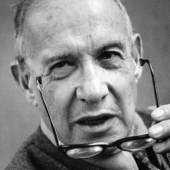THE CASE FOR ORGANIZATIONAL COGNIZANCE

Rumor has it that when business guru Peter Drucker was on his deathbed, someone asked him, what is the most important question in business? He supposedly replied, “Who is doing what?”
Such a simple question and yet it has never been more difficult to answer. Obviously, this query implies others. Even in Drucker’s time, it could have been expanded to: “Who is doing what, with whom, for whom, how, and why?” These days, we must also add, “…using what software, on what platforms, as part of what teams, through what communication channels, after which meetings…” ad infinitum.

| Modern day business guru Dan Sullivan of Strategic Coach teaches entrepreneurs that the key to their time freedom and ultimate success is to think Who not How first. He couples this thinking with a tool he calls his Impact Filter that gives the Who a well thought out reason that the Who can intellectually and emotionally buy in to and figure out how to do it. The Who, in our model is the Individual Contributor who is moved toward cognizance via Sullivan’s Impact Filter which basically outlines the Purpose of the Position the IC is getting ready to take on. |
The old question, like the classic Organizational Chart, gets to something vital, but in a way that misses the ever more complicated reality of 21st century organizations. Not only has “Who is doing what?” turned into an incredibly complex question, “What am I doing and why?” has become a painfully difficult one for workers to answer.
Our goal here is to provide an approach and a set of tools that allow both leaders and Individual Contributors (ICs) to answer these extended Drucker questions honestly and completely. Our aim is fourfold:
- To help people understand organizational complexity – the messy complicated reality, not the neat simplicity portrayed in Org Charts. CEOs will be able to get the answer to “Who is doing what, and why?” and individual contributors will be able to get their answers to “What am I doing, and why?”
- To provide a clear foundation for working within this complexity by supplementing your thinking with a 21scentury Organizational Cognizance Model.
- Introduce a software approach to augment your 2-D Org Chart with a dynamic, interactive 3-D Organizational Graph that allows one to capture and visualize the complex.
- Finally, to provide thinking tools and facilitation examples that help organizations get buy-in, build clarity, transparency, and, ultimately, “Organizational Cognizance” into their companies.
What is Organizational Cognizance? As anyone familiar with the word “cognizance” might guess, it has lots to do with awareness and knowledge, but my use of the term also hearkens back to an earlier definition related to concepts of belonging and connectivity. In the days of knights and heraldry, a “cognizance” was a distinguishing mark or emblem worn by retainers, members of a noble house, to indicate their firm allegiance to it, a sign of their belief, a sign that they belonged, fit, and were connected.
Organizational Cognizance is about building awareness and knowledge for Individual Contributors and helping them, their fellow team members, and leaders to understand precisely how they are connected to others and to the organization at a fine level, where they fit and how they belong. If we had to write an equation for Organizational Cognizance, it might read:
Awareness + Knowledge + Connectivity = Organizational Cognizance
Perspective: The Individual Contributor. A quick example will make the concept clear. Imagine yourself as a new employee, or Individual Contributor, starting at an organization, and you are presented with the company’s Organizational Graph, based on the Organizational Cognizance Model. The Model is built around your Job and the Positions you hold in that Job. Individual Contributors wear various hats, and most Jobs include at least several Positions, as we’ll explore in depth in Chapter 2. A Job called “Sales Associate,” for example, might include a Customer Greeter Position, a Sales Consultant Position, a Sales Invoicing Position, a Market Feedback Position, and a Business Networking Position.
On day one, the Organizational Cognizance Model provides you as an individual contributor with the answers to all of these 14 questions; the 14 Point Checklist:
- What is the Purpose of my Job?
- What Positions do I fill as part of my Job? What is the Purpose of each Position?
- Who do I report to?
- Who is my Mentor?
- Who do I turn to for Coaching in each of my Positions?
- What are my Objectives?
- What are my Key Results?
- What Teams am I part of?
- What Meetings will I attend?
- What Workflows do I participate in?
- What Processes will I follow?
- What Systems do I interface with and need to master?
- What Entities (clients, projects, contracts, etc.) will I interact with?
- What Skills or Competencies do I need now and in the future?
I am not suggesting that an IC can be Organizationally Cognizant an hour after filling out HR’s forms, yet, armed with all of this info, a team member can be pretty damn aware on Day One. She will understand where and how she fits in, to a degree that some employees never enjoy, even after years at an organization. She immediately has a map to reference, independently, and already is travelling down the road to feeling that she believes and belongs and understands her Accountabilities. She is starting off with the answers she needs to become Organizationally Cognizant.
I used the word “awareness” above and it’s certainly related, but I want to emphasize that the state I’m describing as Organizational Cognizance for our hypothetical team member is much deeper than mere awareness. A couple of examples will help.
Let’s say a company occupies five floors of a skyscraper. ICs show up to various departments on five contiguous levels every day from nine to five. Proximity breeds awareness for these employees – they know where Accounts Receivable is, three floors down, and that a dozen or so people work in Marketing two floors up, but they don’t have Cognizance. They don’t comprehend at a deep level what’s going on outside of their cubicle, and certainly not outside of their department. They don’t understand how their work affects other Teams and Workflows, what the Purpose of every piece of their Job is or how each tie to the Purpose or Objectives of their Team, Department, Organization. They are not Cognizant.
Humans share the same five senses. Touching, smelling, seeing, hearing, or tasting something means that you are aware of it. What’s that I smell? Smoke. Smelling smoke is awareness but comprehending that the smoke you smell is wood smoke from a cozy fireplace versus an electrical fire starting on the floor below you is Cognizance. The latter level of comprehension requires grasping a bigger picture, understanding context, getting how things are connected, what they mean, and where you fit.
